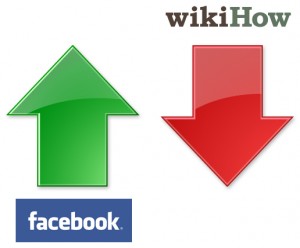The web is massive bank of data, which is far too big to be regulated. Because the web can’t be regulated, it is very easy for false information to spread – fast.
If you are a blogger, it is really important that you publish information which is reliable and trustworthy. Don’t copy what the crowd says unless you know they are right, as this is not only misleading to your readers, but can also see you get penalties dished out from search engines. If you get a reputation for publishing unreliable content, the likelyhood is that your readership will fall.
When you publish something that you have found out elsewhere, you need to make sure that it is accurate and reliable, before you publish it.
How to Mythbust Rumours
When you find information, on the web, in order to ensure that it is reliable, it is always a good idea to check that it appears elsewhere. A general rule of thumb is to check that what you are reading is the same on 3 other sites, one of which is a highly reputable site.
So what is a reputable website?
Government Websites
There are a few way so to identify if a site is reputable or not. One way is to see if it is a government website. Any site which is government run is likely to be very reputable. Government websites usually end in their own unique domain name extension. If you live in the USA, government sites end in .gov or .fed.us, in the UK .gov.uk, in France .gouv.fr, .gc.ca for Canada, India’s extension is .gov.in and the list goes on.
Major News Corporations
Government sites won’t always report things that you want to verify though, so there are other ways to tell a reputable sites. Big news websites like BBC.co.uk/News and Guardian.co.uk will usually only publish information that is factual and accurate, so you can usually trust them.
 The information they publish is likely to be accurate, however it may not be impartial, so that is something to watch out for. Often news firms will take a political side, and therefore report news in a certain way – and may only publish part of a story.
The information they publish is likely to be accurate, however it may not be impartial, so that is something to watch out for. Often news firms will take a political side, and therefore report news in a certain way – and may only publish part of a story.
High PageRank Sites
Google PageRank is calculated largely by the number of backlinks a page or site has. If a website has a very high PageRank (6+) then it is likely that it has a lot of other sites linking to it, most probably because it publishes a lot of high quality content, which people find useful and therefore link back to. High PageRank sites aren’t always trustworthy, but the higher up the spectrum of PageRank you go, the less likely it is that a site is going to be providing false information.
If a website is a PageRank 8, 9 0r 10, unless they have manipulated Google’s algorithm (through black hat SEO, which will only work for a short while, before Google catches them) then the site is likely to be extremely reliable and reputable, therefore you should be able to trust the information, data and facts that they produce.
1,000,000 to 1
If 1 highly reputable site is saying one thing, but 1 million other (not reputable) sites are saying another another, then the chances are that the 1,000,000 sites are just recycling the same false information, creating a massive bank of false information. This is one reason why you should be really careful who you trust on the web, and also make sure that you verify information with at least one reputable site. Be careful who you trust.
Academic Research
Verifying information with at least 3 sources, one of which is reputable is something which is also advised in academic research. Therefore if you use the same standards on your blog, you can’t go wrong! Search engines and readers alike will respect you for providing good quality, highly reputable content.
Technology Bloggers Policy
Every time I write an article and quote information/statistics etc. I always try to follow the 3 and 1 rule: check the information appears on 3 other sites, at least one of which is ‘reputable’. This means that everything I write should be reputable.
The post guidelines ask all writers to ensure they use the 3 and 1 rule, however we cannot guarantee that all writers do. In our Privacy Policy, we state how we try to ensure all content is true and factual, however it is always advisable to independently verify information for yourself.
Do You Verify Your Content?
Do you always try to ensure that you use the 3 and 1 rule when publishing information? That not only applies to blog posts, but also to comments. If not what measures do you use, or don’t you think it really matters?

